For the dataset below, I'd like to customize my below plot by ordering states according to the total number of deaths experienced by age 65. I tried the below code.
The answer here does not answer my question because my x variables include 50 values whereas the response is helpful for variables with a few values.
Thanks,
NM
Here is my data:
CAPS_2019 <- structure(list(Age = structure(c(1L, 2L, 3L, 1L, 2L, 3L, 1L,
2L, 3L), .Label = c("30", "50", "65"), class = "factor"), Dx = c(3.057,
7.847, 17.157, 2.851, 8.861, 21.885, 2.521, 7.889, 21.328), PopName = structure(c(1L,
1L, 1L, 2L, 2L, 2L, 3L, 3L, 3L), .Label = c("AK", "AL", "AR"), class = "factor")), row.names = c(NA,
-9L), class = c("tbl_df", "tbl", "data.frame"))
My code:
CAPS_plot_facet <- CAPS_2019 %>%
ggplot(aes(x = reorder(PopName, Dx), y = Dx, fill = factor(as.character(Age)))) +
geom_col(position = position_stack(reverse = TRUE)) +
facet_wrap("Age",scales="free_x")+
theme_classic()+
theme(strip.background = element_blank(), strip.text = element_blank())+
coord_flip()+
labs(x = "State", y = "Deaths (%)", caption = (""), face = "bold", fill = "Age")
CAPS_plot_facet
My plot:


